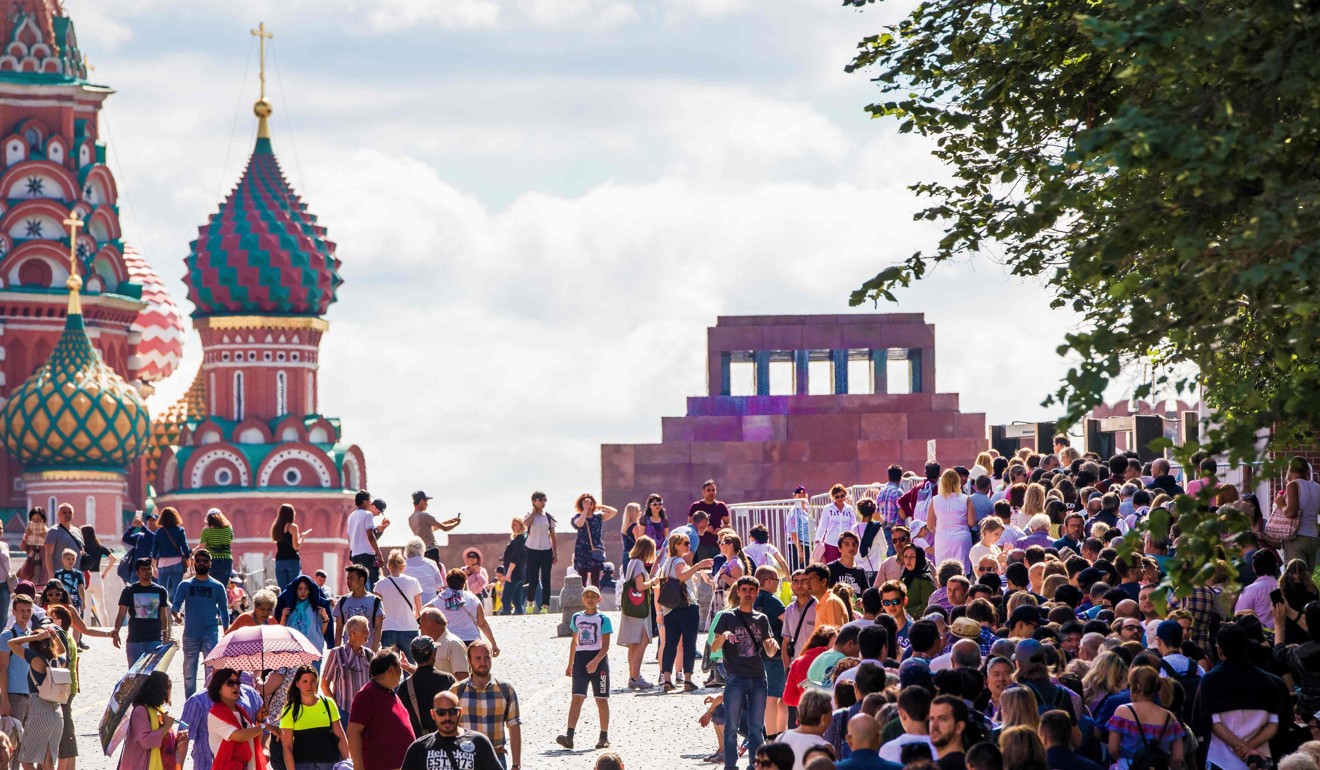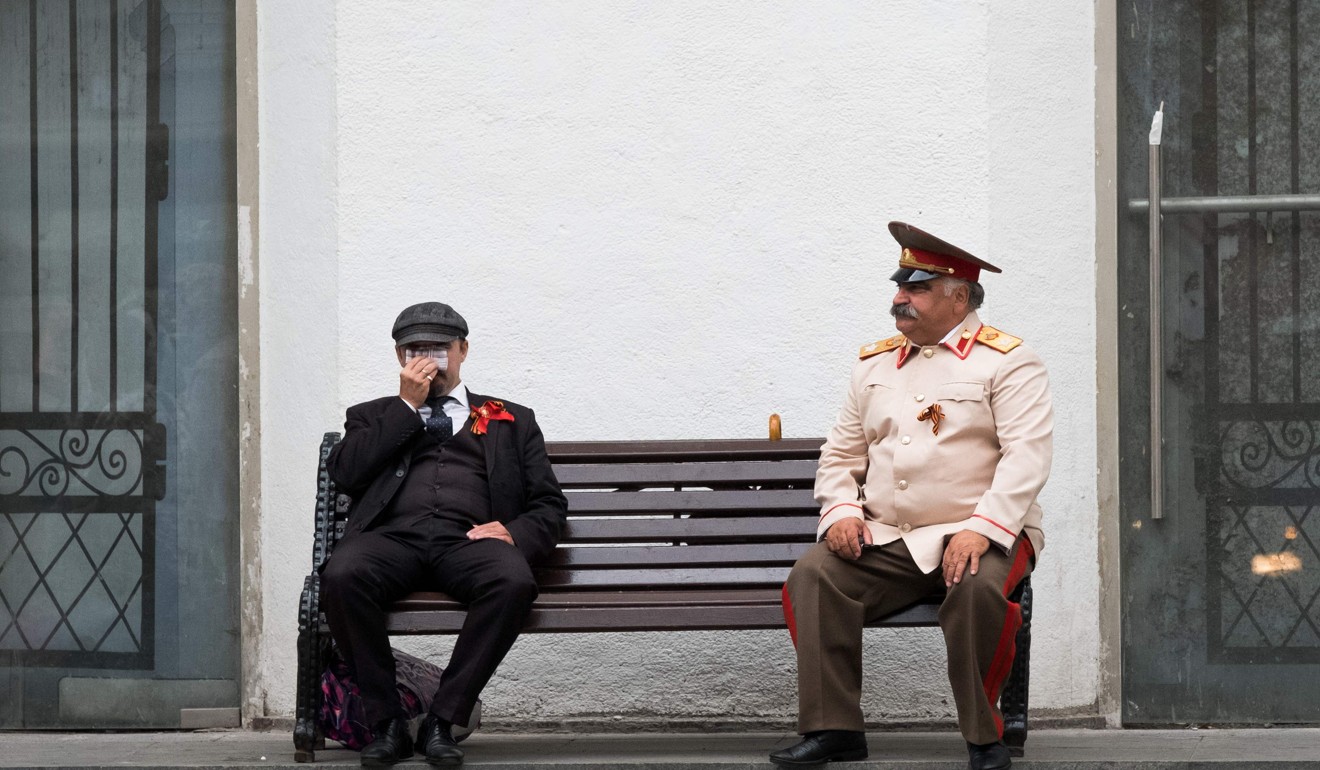
The hunt for Red October: how the Bolshevik Revolution turned into a Chinese tourist trap
The 100th anniversary of the October Revolution has triggered a surge of Chinese ‘red tourists’ to Russia, eager to pay homage at the birthplace of communist revolt
On a recent cloudless morning, a group of people from Urumqi, in northwestern China, emerged bleary-eyed from the dimly lit mausoleum on Red Square.
For the European tourists who wait out the long line that snakes along the red brick walls of the Kremlin, Vladimir Lenin’s embalmed body is a curiosity. For the Chinese visitors, however, he’s much more.
“Coming here, exactly 100 years later, is extremely important for the older generation,” said the group’s 32-year-old tour leader, Wang Lin. “For the youngsters, not so much,” he told me as he shepherded away tourists of various ages.

Coming here, exactly 100 years later, is extremely important for the older generation. For the youngsters, not so much
But 2017 has seen a surge in Chinese tourists who want to mark the centennial anniversary of the communist revolution that swept the Bolsheviks into power and changed the course of not just Russia but China, too. For the first six months of this year, the number of visitors from China was up by 36 per cent compared with the same period last year, according to the Russian Federal Agency for Tourism.
The agency attributed the increase to “red tourism,” an initiative by the Chinese government to encourage travel to places of importance in communist lore, both inside and outside China, that has been encouraged and promoted by President Xi Jinping himself. Red tourism is being “actively expanded by the Chinese government so that its people don’t forget the value of communist ideology,” said Vladimir Petrovsky, a scholar of Far Eastern studies with the government-linked Russian Academy of Sciences.

For the Chinese, Lenin holds a sort of saintly status. They put flowers on the statue of Lenin’s mother
In Soviet days, the anniversary of the October Revolution was a much-anticipated annual event that saw huge parades held on Red Square. Today, however, the Russia of President Vladimir Putin is less inclined to celebrate a time when revolutionary zeal swept through the streets and overthrew those in power. Despite the uncertainty, the Kremlin is also loath to condemn the 1917 revolution, which led to the creation of a superpower that kept the United States on its toes for decades.
Russia’s courting of Chinese tourists comes at a time when both countries have been seeking a closer diplomatic relationship. When Xi visited Russia in July – for his third meeting with Putin this year – he described relations between the two nations as being at their “best time in history.” The two leaders were pictured toasting champagne, and by the time Xi left, their countries had inked US$10 billion worth of deals.
“Red tourism ... is discreet propaganda – it’s an instrument of soft power,” Petrovsky said. And if the geopolitics look good, the financials for cash-strapped Russia look even better. “Russians, especially the young, are not nostalgic for their revolutionary past,” he said. “And they’re not going to spend money on it.”
This year, tourism officials expect that around 6,000 Chinese visitors – up 1,000 from last year – will visit Ulyanovsk, a tidy riverfront city on the Volga about 450 miles east of Moscow, where Lenin was born.
Ulyanovsk’s streets have been decorated for the occasion: Quotes from Karl Marx have been written in Chinese and Russian on the asphalt. Restaurants have prepped with Chinese-language menus. And near the two-storey, cream-coloured house where Lenin was born, the Venets hotel boasts of staff with knowledge of basic Putonghua.
On a recent visit, many Chinese visitors came to pay their respects dressed up in Soviet-era costume, wearing the iconic red neck scarves that are familiar to generations of young communists – both Soviet and Chinese.
Ulyanovsk (formerly known as Simbirsk but which changed its name upon Lenin’s death in 1924, in honour of his pre-revolutionary name, Ulyanov) has ambitions to establish direct flights next year to Shaoshan, the birthplace of Mao Zedong, the founder of modern-day communist China. That deal, agreed on last year, comes under more general plans to bring more Chinese tourists to the so-called “red route,” which follows Lenin’s footsteps from Ulyanovsk to Kazan, where he went to university, to St Petersburg, the site of the revolution, and then Moscow, where the new Soviet government was set up and which became Lenin’s final resting place.
“For the Chinese, Lenin holds a sort of saintly status,” said Yulia Skoromolova, the director of the state-run regional tourism agency in Ulyanovsk. “They put flowers on the statue of Lenin’s mother. Russians don’t do that,” she said, referring to the city’s cast metal statue of Lenin as a young boy, standing in his mother’s protective embrace.
But even for Skoromolova, who has dedicated most of her career to memorialising Lenin, the anniversary is a complicated one. “Russians relate differently to the revolution. People both gained and lost during this period,” she said in the gardens near the complex, where children jump about in fountains under the gaze of an immense head of Lenin. “Another revolution would be the worst thing ever. It could turn into a civil war. Of course no one wants that.”

